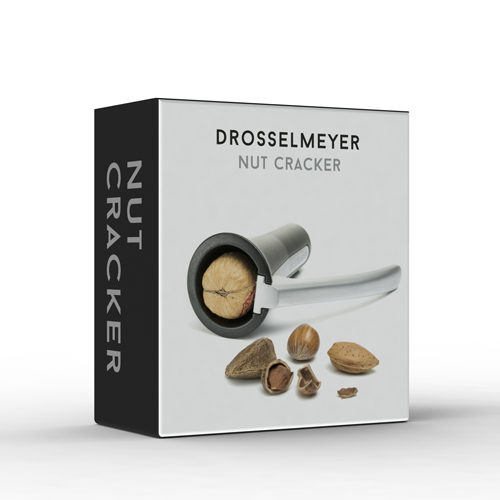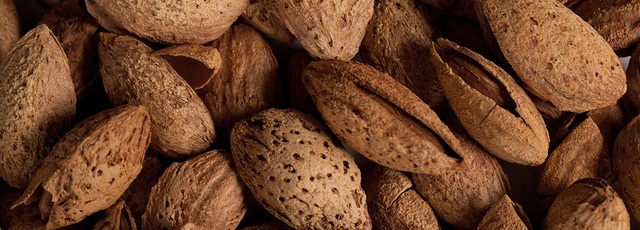“Here is a veritable treasury of wealth, a potential food supply which may save the world from any suggestion of hunger for centuries to come if properly utilized.” – Dr. Kellogg
John Harvey Kellogg was an American medical doctor, who made great improvements into the American diet and way of eating by promoting a plant-based diet, exercises and a simpler way of living. His views on nutrition, which were revolutionary at the time, had a great impact on adopting a healthier and better way of living for a great many people. He and his brother were also the inventors of the worldwide famous corn flakes, which most of us had tried at least once in our lifetime.
Dr, John Kellogg had a strong notion that the consumption of nuts was necessary and he strongly recommended their use. He believed as well, that nuts were a way to fight through a decline in the food supplies. Dr. Kellogg even patented a method of producing peanut butter through boiling the nut, instead of roasting it. He often served peanut butter, to the patients at his Battle Creek Sanitarium. The place was known for its strict diet based on vegetarianism and healthier way of life through sustaining from alcohol and doing a lot of physical activities.
At age 12, John Kellogg was an apprentice for a printing house, run by an Adventist named James White. This is where he had his first running with the idea of a healthy, clean lifestyle, as the Seventh- Day Adventists were practicing it as a duty to the faith. As a result, inspired by all this – Dr. Kellogg became a pioneer in the world of nutrition. Undoubtedly his ideas on adopting a diet rich in vegetables, fruits and nuts were new and foreign for the time.

The Drosselmeyer Nutcracker. Visit our Shop
Nowadays, we know that nuts contain valuable nutrients, minerals, and vitamins that aid us into achieving a well-balanced and fulfilling regime. During the 20-th century though when people were relying a lot on animal products to sustain themselves, Dr. Kellogg really shook the norm when he declared the nut as “… sweeter, cleaner, healthier, and cheaper than any possible source of an animal product.” He argued that it was more financially sound to grow nuts then to look after livestock as well. He also pointed out that nuts have double the amount of nutrients that meat had.
During a speech in the year, 1917 at the Eighth Annual Meeting of the Northern Nut Growers Association – Dr. Kellogg explained that nuts did not contain as much sugar; they were dense in protein and fiber. He called the nut “a sort of a vegetable meat” and he often put both foods head to head, emphasizing the positives of nut consumption. He also argued that even though the nut might have had a reputation to be harder to digest, it was most likely due to the fact that people consumed it after they already have eaten or between meals, which was probably the reason of indigestion. His idea to make the nuts into butter was born from this existing problem. He gave an example of a study, made in Germany that showed that nuts, due to their size are cannot be digested properly, so he decided to make them into a paste and aid the digestive system. He used peanuts to create the paste – the peanut butter. Later he abandoned this nut because of other types that were easier to prepare since they did not need a heat treatment and cooking.
Dr. Kellogg also announced that the fats in nuts were a lot easier to process than the animal ones since the fats inside the nuts were a lot closer in structure to the human body. But was it a good idea to substitute meat with nuts? Dr. Kellogg had an answer for this problem as well. He pointed out that often people overindulge in meat products, thus overdose in the proteins they contain in case they wanted to add some fresh vegetable to their meal too. Nuts, on the other hand, combined their proteins with digestible fats so the danger of overdosing on proteins was very slim. He also declared that the proteins in nuts were far better quality to the one in vegetables or gains. But the positives the doctor noticed did not stop here. Nuts did not contain uric acid, urea or carmine. They were not acceptable to a process of decay, unlike the meat. They did not contain parasites or bacteria.
The doctor also made some good points, making a link to the way people ate before- relying mostly on nuts and fruits. An example of an athlete was made – Carl Mann, who made his walking match on a diet of nuts, lettuce, and fruit.
Kellogg also made a great progress in creating vegetable substitutes to meat, such as Protose and malted nuts for example. It seemed that the malted nuts, that resembled malted milk, were of great help to nursing women, as it increased the milk flow and bettered the baby’s health in general. This example led him to believe that nuts can substitute even eggs and milk. He also suggested nuts for people, who had allergic reactions to milk and milk-based products. He gave an example of a lactose intolerant child that managed to survive thanks to a liquid nut diet for the first three years of her life.
He did not forget to point out the monetary value of focusing on nut production instead of meat. He deduced that one acre of walnut trees will produce a food equivalent of 3,000 lbs of beef. “A single acre of nut trees will produce protein enough to feed four persons a year and fat enough for twice that number of average persons.” Dr. Kellogg stated.
It seems like Dr. Kellogg was a real visionary and a bright mind ahead of his time. His contribution to the vegetarian movement and making nuts more popular is undeniable and most cherished, even now.
Image Copyright: Amazing Almonds, License: CC BY 2.0



